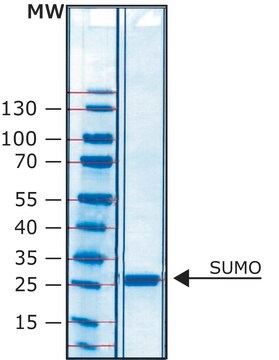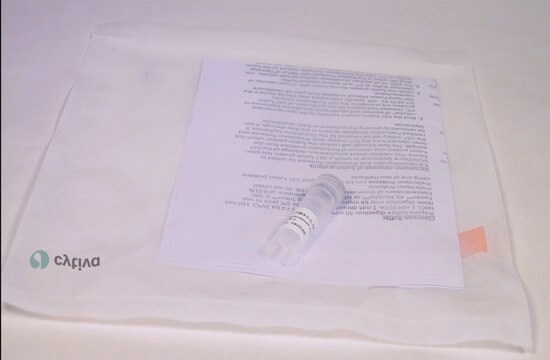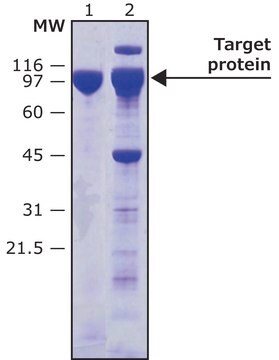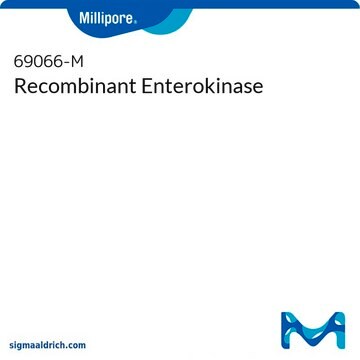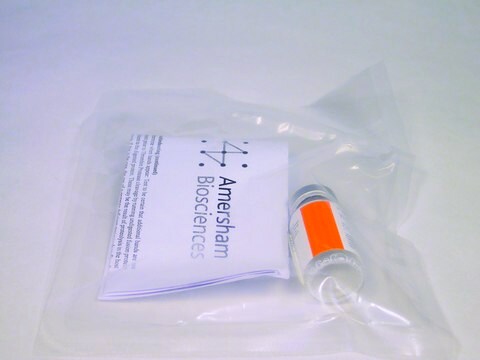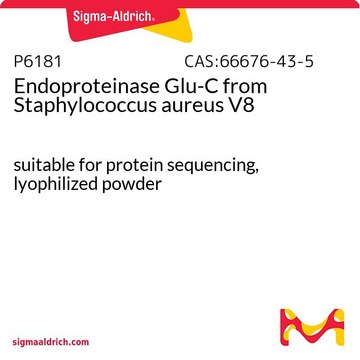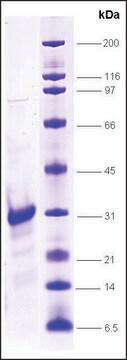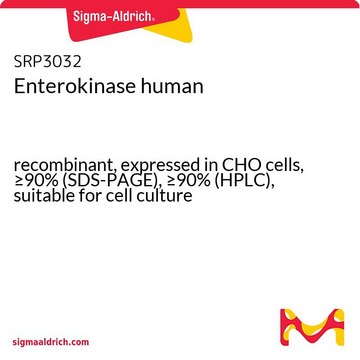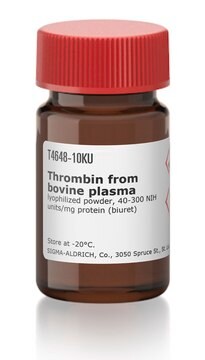SAE0045
HRV-3C Protease.
N-Terminal His tagged recombinant protein, aqueous solution, 0.8-1.2 mg/mL
Sinónimos:
Human Rhinovirus 3C Protease, Levlfqgp site protease, PreScission Protease
About This Item
Productos recomendados
origen biológico
human (human Rhinovirus Type 14)
Nivel de calidad
Análisis
≥90% (SDS-PAGE)
formulario
aqueous solution
actividad específica
≥5000 U/mg
mol peso
21 kDa
concentración
0.8-1.2 mg/mL
técnicas
protein purification: suitable
idoneidad
suitable for protein modification
aplicaciones
life science and biopharma
Condiciones de envío
dry ice
temp. de almacenamiento
−20°C
Descripción general
Proteolytic cleavage occurs between the Gln and Gly residues.
HRV-3C protease is a useful tool to cleave recombinant proteins that are expressed as a fusion protein with this sequence, between the carrier domain and the protein of interest.
This recombinant version contains a six-histidine tag and can be easily removed by IMAC chromatography.
Aplicación
Definición de unidad
Forma física
Código de clase de almacenamiento
10 - Combustible liquids
Clase de riesgo para el agua (WGK)
WGK 2
Certificados de análisis (COA)
Busque Certificados de análisis (COA) introduciendo el número de lote del producto. Los números de lote se encuentran en la etiqueta del producto después de las palabras «Lot» o «Batch»
¿Ya tiene este producto?
Encuentre la documentación para los productos que ha comprado recientemente en la Biblioteca de documentos.
Los clientes también vieron
Nuestro equipo de científicos tiene experiencia en todas las áreas de investigación: Ciencias de la vida, Ciencia de los materiales, Síntesis química, Cromatografía, Analítica y muchas otras.
Póngase en contacto con el Servicio técnico